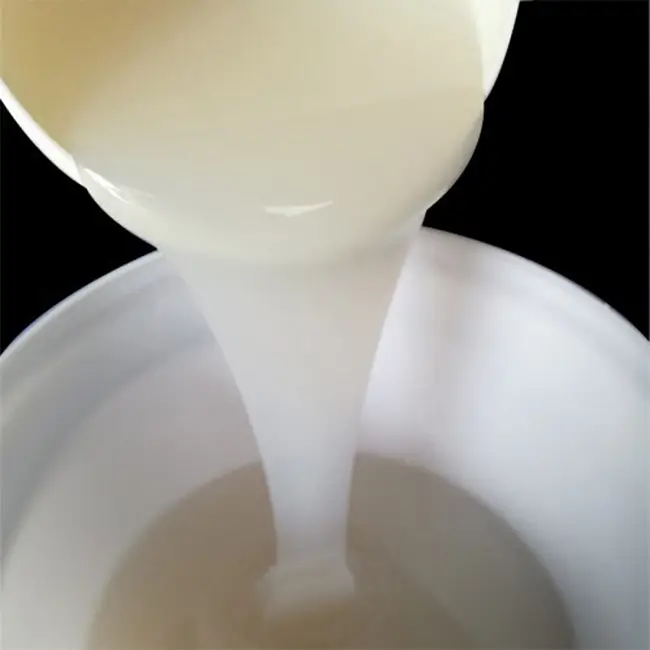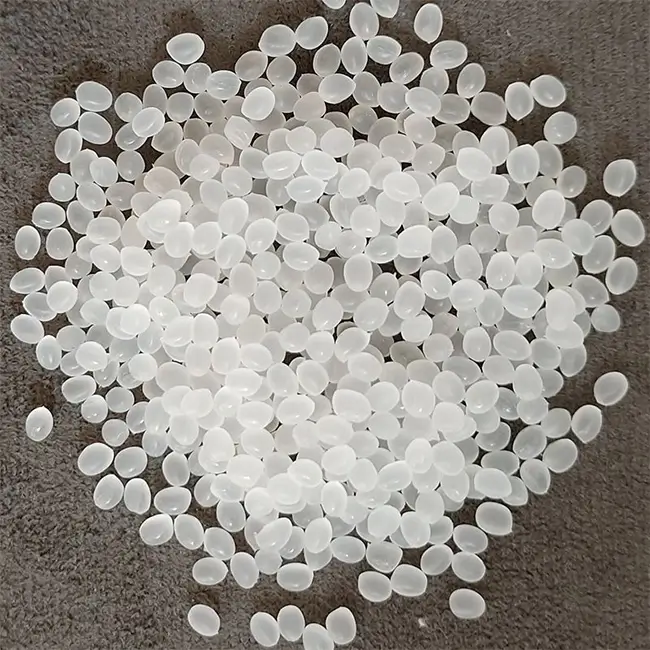In this article, we will demystify silicones by explaining what silicone rubber is, how it is made, and exploring its various uses in different industries. Whether you are curious about silicone or need information for a specific project, this article has got you covered.
What Is Silicone?

We must know what is silicones is? When we say silicone this is kind of versatile have a synthetic polymer which came from the silicon, carbon, to the oxygen and last one came from hydrogen.
As you can see in the picture above that it shows the uniqueness of its properties such as its flexibility, the heat resistant properties, its shows their low toxicity and of course their resistance to the ultraviolet radiation and also it will moisture it. You can also see it by having a widespread it by using those different applications forms including their sealants, being adhesives, the lubricants, some medical implants, it can also use it into the kitchenware and electrical insulation. But, the heat resistant as well as its biocompatibility will make it more precious valuable to those industrial applications ranging from its automotive and their constructions to the healthcare and their electrical components.
Unique Properties
We will know those other properties:
1. Flexibility and Elasticity
This one kind of flexible molds and elastic properties by allowing it to deform by under the stress and it can also return it to their original shape. This unique properties makes it fitted for the applications where its flexibility is very essential.
2. Heat resistant properties
This kind of properties the silicone will shows the high temperatures stability and also remains to be resilience to the elevated temperature. The heat resistance to this it really made it for ideal to use it by cooking utensils, for automotive computer chips and electronic devices.
3. Low Toxicity
The silicone will consider the non-toxic and those biocompatible things also this one can make it very suitable for the use in medical grade silicone for example in the surgical implants, for baby produce silicone products and also for the kitchenware.
4. Chemical properties
In this properties which the chemical element inert and it will does not react the most substances but also contribute to its thermal stability and their resistance to degradation in different environments to its chemical structure.
5. Water and Moisture Resistance
Fundamentally, the silicone resistant to the water and the moisture, by creating it suitable for the applications where sealing and protected against to those elements are crucial to it.
6. Electrical insulation properties
To this electrical insulation it give excellency to the silicone rubber because it making it valuable for the use in electrical components, those insulators and to sealants in electronic devices.
7. Adhesives and Sealants properties
As we know that the silicone rubber is based on the adhesives and to the sealants to the different surfaces because it will provides the effectivity to bond and the sealing capabilities. Which this properties can makes them widely used in the construction site, for the automotive and also other industries.
Many Forms
As we all know that the Silicone rubber have a different forms, each of them are being tailored to those specific applications because of its the unique production:
1. Silicone rubber fluids and oils
This forms the liquid silicone rubber will provide the lubricants, it will have the heat transfer, and the damping production in the applications including the electrical insulation, automotive and the industrial applications.
2. Silicone Elastomers
This kind of silicone rubber is very flexible molds and stretchable that is being used in seals and those gaskets also this used by the medical devices and also those different molded production by owing its elastic properties and very durable.
3.Silicone Gels
This kind silicone rubber is very soft and pliable gels that are being used for cushioning, for encapsulation and for the thermal interface materials by finding the applications in those electronics and medical grade silicone rubber.
4.Silicone Foams
This forms is lightweight and insulating foams that being employed in the applications such as the cushioning, the thermal stability and gasketing the automotive and the constructions.
5. Silicone coatings
This kind of silicone have a protective coatings that will offer the weather resistance, this is a watertight seals like waterproofing have anti-sick properties and this one was being used in the applications that is ranging form the cookware to industrial materials.
6. Silicone Emulsions
Which this one will have stable mixtures of it silicone rubber oil and watertight seals that are being used for the silicone materials for cosmetics.
Silicone polymer
This kind of forms have a synthetic polymer materials which derived it from the silicon, to the oxygen atoms, carbon and from the hydrogen. It shows the unique polymers structure for repeating it the silicon-oxygen bonds and making a more flexible and versatile polymer. This kind of properties as well it will make the polymers well fitted for a very huge range of applications including the sealants, the adhesives, those excellent lubricants, medical applications and the electrical insulation, etc.
Silicone rubbers
This type of forms they are elastomeric materials which came from the silicone polymer. It shows it the unique combination of its properties such as very flexible, have high temperatures resistance, have weather durability and also chemicals production. Also this form widely known as being used in electrical insulation, medical applications lastly this one is owing it to their biocompatibility that this is good because it have a non-toxic nature like natural rubber and environmental factors resistance.
Silicone resins
This one very durable and have a heat-resistant materials which come from the silicone polymer. This can be used in applications to protective coatings, wide temperature range resistance are very required.
Performance in Harsh Conditions
To excel it regarding about the harsh conditions in Silicone materials because of their uniqueness production. The extreme temperatures resistance, its weather durable, its chemical element and as well as its electrical insulations, synthetic elastomer which all of these are being maintain stable and the functions to the extreme temperatures, outdoor exposure and chemical element.
The water and moisture resistance their flexibility and the corrosion resistance it will contribute their performance in wet, the humid, etc. That is why to avoid those performance in a harsh conditions regarding about the manufacturing process of silicone rubber those consumer products should do have a personal care products its material because that will give advantages to them.
What Is Silicone Made Of?
As a consumer products when we say silicone this is synthetic polymer materials which is composed of its silicon, the oxygen, carbon and also hydrogen. Which the silicone called as silicon, this is a chemical element will abundant to our nature and because of the manufacturing process which it it will involves it by combining the silicon with those other material.
Those carbon and the hydrogen atoms or silicon atoms it will enhances those material flexibility, its thermal and those other desirable properties. Moreover, the silicone rubber have a specific composition and this one is will allow it to show its characteristics like the heat resistance, silicone, silicone oven mitts, low toxicity.
How is Silicone Produced?

Now, we will know how is the silicone are being produced through the following steps:
Step 1: Isolate Silicon From Silica
In this step the isolating silicon came from the silica which involves in the production of its called carbothermic reduction. This step the SiO2 which can be found in the quartz sand which is heated it with carbon in an electric furnace just to produce medical grade silicone. Moreover, high-temperature reaction which it cause of carbon and then react to silica.
Step 2: Combine Powder With Methyl Chloride
In this steps combining the powder with methyl chloride which involves by mixing a powdered with methyl chloride and the compound will be methane and chlorine. This steps have a different chemical element reactions and manufacturing process. Mixing the powder with methyl groups can be a good part of the reactions that leads to the synthetic polymer of the certain chemicals.
Step 3: Distill the Mixture
Distilling the mixture which the heating will combined the powder and the methyl chloride mixture and separate its components which is based on their different boiling points. When that mixture is already heated the substance with the lower is boiling point.
Step 4: Addition of Water
Water will involves the introducing it the water by adding it into chemicals and industrial process for the quality management which will include the dilution, the reaction initiation or the extraction of the certain components. But, the water often used as to facilitate the chemicals reactions and dissolve the substances.
Step 5: Polymerization of the Silicone rubber
Silicone occurs when their is polymerization and those material involves the chemicals process this step is very contagious in the production because the silicone materials where small molecules (monomers) and this one will undergo a reaction to create the larger, interconnected structures which is the polymers.
Benefits of Silicone rubber
- Temperature Resistance – maintains its stability and flexibility into a wide temperature.
- Flexibility and Elasticity – the silicone products have high elasticity that will allows the deformation under its stress and recovered it to its original shape.
- Chemicals inertness – Many chemicals by ensuring the stability and durability .
- Electrical Insulation – the properties will make it more suitable for the use of the electronic components and insulators.
- Water Resistance
- Versatility Forms – rubber, fluids, resins and also gels, dry cleaning these will cater it to diverse applications.
- Low Toxicity – Non toxic this is natural rubber and safe to use in silicone products.
What is the Composition of Silicone?
Its a synthetic elastomer which consists of silicon, oxygen, carbon, and also hydrogen. This one the basic building block which is the silicon – oxygen chain which it forms a polymer structure which is known as the polysiloxane. The specific of this formulation is silicone can vary which it can leads to various types of its synthetic elastomer, fluids and resins.
What is Silicone Used For?

- For the automative
- For the Electronics
- For the Construction
- For the Healthcare
- For the Consumer Goods
- For the Aerospace
- For the Textiles
- For the Energy
- For the Optics
- For the Industrial applications
- For the Cookware
- For the sealants and adhesives
- For the Toys
- For the Energy Transmissions
- For the Renewable Energy
What Are the Properties of Silicone?
- Temperature Resistance properties
- Flexible and Elasticity properties
- Chemicals Inertness
- Weather Durability
- Electrical Insulation
- Water Resistance
- Biocompatibility
- Heat resistant properties
- Versatility in Forms
- Mold ability
- Non- toxic
- Transparency
What is the Silicone Raw Material?

When we say the raw material for silicone rubber is primarily silicon which it can be extracted came from the silica which found in quartz sand. And the process is the heating metallurgical-grade silicone rubber. and then convert it into silicon Tet chloride. Then the carbon and hydrogen it will enhance those properties and leads to making it diverse forms such a the rubber, fluid and gels, and then the silicon have a very unique chemicals structure.
Is Silicone Safe for the Environment?
It is safe for the environment because of its inert and stable nature compared to inorganic silicon. Silicone have a low environmental effect during its production and how to use it. However, silicone it will not release a harmful substances or it will not emit volatile organic compounds in the air. The durability will also gives it longer product lifecycles and then reduce the need for often replacements and lastly minimizing the waste.